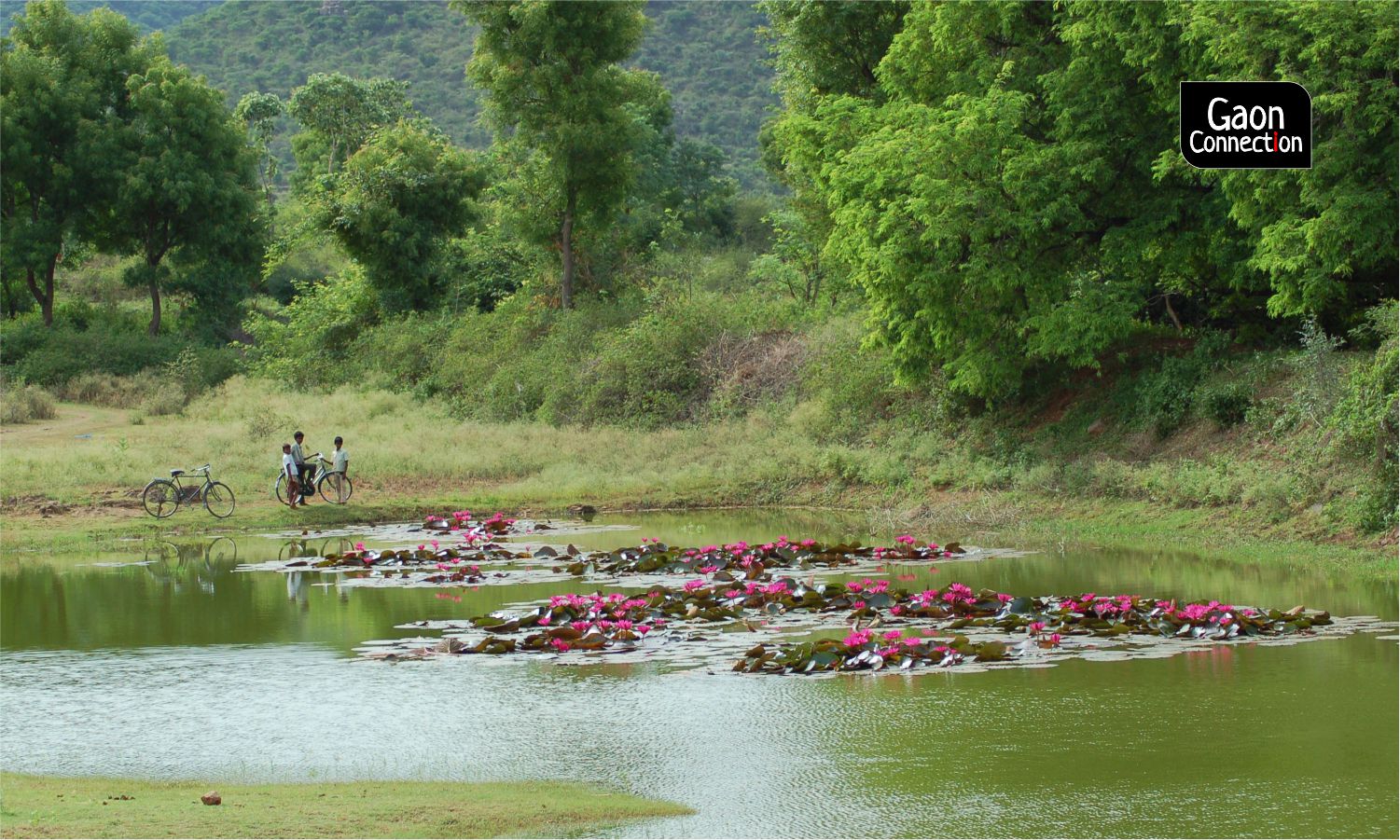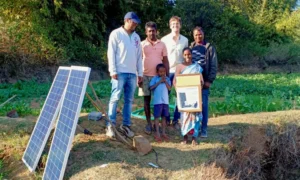The Nilgiris, Tamil Nadu
February 2 marks the World Wetlands Day. Fifty years ago, on this day in 1971, a Convention of Wetlands was adopted in the Iranian city of Ramsar to draw the attention of the world to the importance of wetlands to the planet.
Closer home, in Tamil Nadu, Nilgiris district in the Western Ghats, about 600 kilometres away from state capital Chennai, awareness about this vital ecology is taking root as school students, non-profits, corporates and local villagers are working together to restore the degraded wetlands.
In Coonoor, a hill station in the Nilgiris, a 20.23-hectare marsh has shrunk to three hectares. But sustained efforts by the non-profit Clean Coonoor, along with the local citizens, has successfully restored a part of the wetlands.
Spadework on the Coonoor wetland began in February 2019 when the weeding and subsequent planting of native grasses began. With the help of Godwin Vasanth Bosco, restoration ecologist and researcher, and author of Voice of a Sentient Highland, exotic grass was removed and replaced with native grasses that are hardy, take deep root (they can go up to seven feet) and hold water.
“The wetland had to be nurtured for a while, watered and looked after. Within six months, we could see the change,” Vasanthan Panchavarnam, a trustee and member of Clean Coonoor, explained to Gaon Connection. The hitherto-muddy waters became crystal clear, he said. “In fact, after the initial planting, many other native species have grown back by themselves,” he added.
The world of wetlands
Wetlands are a rich ecosystem where the combination of land and water provide sustenance and life to a variety of plants, insects, reptiles, amphibians, etc, with a high number of endemic species thriving in it. The soils are rich in carbon and fertile. It is a complex ecology that traps, stores and releases water.
According to Shiny Mariam Rahel, wetlands plant specialist of the non-profit Keystone Foundation, based in Kotagiri, another hill station, about 20 kms away from Coonoor, “There are many rare and endemic plants growing in the Nilgiris that are found nowhere else on the planet.”
The flora and fauna in these wetlands harbour rare flowers, frogs and are the lifeline for all forms of wildlife, she said. “The plants, grasses, sedges, herbs, mosses, lichen and ferns in these habitats are designed to trap the water from rain, mist and fog, and release it slowly to ensure there is a steady supply of filtered clean water.”
However, a large number of these wetlands are dying.
“Just between Kotagiri and Ooty [Udhagamandalam], we have surveyed thirty six important wetlands. Did you know the Ooty Race Course was once a wetland,” asked Anita Varghese, director, biodiversity, of the non-profit Keystone Foundation, and chair, Western Ghats Plant Specialist Group.
“High-altitude wetlands are the most endangered of sub-vegetation types within the grassland ecology,” Bosco explained to Gaon Connection.
In 2013, he set up a grassland nursery called Upstream Ecology, the first of its kind in the Nilgiris, where he nurtures nearly 75 native species of native plants, including grasses, shrubs and shola trees, on 0.40 hectares. He supplies saplings to anyone looking to bring indigenous vegetation into their lands and restore wetlands.
“The Nilgiris used to be nearly seventy per cent grasslands and thirty per cent shola forests. Now the grasslands cover a mere nine per cent of land and the sholas fare marginally better, covering about fifteen per cent,” Bosco said.
Threat to shola forests
In the last 200 years, endemic shola forests, grasslands and wetlands have shrunk and are in imminent danger of being wiped out by invasive species such as eucalyptus, wattle and other exotics.
Members of the Western Ghats Plant Specialist Group, comprising conservationists, botanists, plant taxologists, and habitat restoration experts, recently met in Udhagamandalam, the Nilgiris, to chart a course for documenting, studying and preserving the more-than-2,100 species of endemic flora of the region.
“There is hope, always pockets of hope,” Varghese assured Gaon Connection. “A lot of work is happening in order to bring back native species of vegetation in the Nilgiris,” she said. The non-profit set up in 1993 at Kotagiri in the Nilgiris, has since worked in the Nilgiri Biosphere on eco-development, along with the local inhabitants.
About a decade ago, the non-profit took up the restoration of just an acre (0.40 hectare) of land, and restored it into a semblance of what it must have been like originally.
“Thousands of people that live around it have benefitted, because the water flow has increased and the groundwater level has gone up too. It happened because the people saw the wisdom in restoring native species to the land,” said Varghese.
So, along with the Kotagiri town panchayat and the local inhabitants, the non-profit set about cleaning the area that, for years, had been used for open defecation and dumping garbage. It was overgrown with exotic species and a spring water source that was highly contaminated and dried up periodically.
Today, the restored area, called the ‘Happy Valley Project’ is a thriving shola, that supports vibrant flora and fauna. “We cleared the area and replanted it with native grasses and saplings,” said Varghese.
Restoration of native species
At present, Bosco is working on a sixty-acre [24.28 hectare] site of a corporate company based in Bengaluru, planting native species of grasses and shrubs on it. He has set up a nursery of indigenous species of plants on site. The company wants to, sometime in the future, make it an eco-tourism site.
“I have worked with the Lawrence School, Lovedale, that has given over five acres [2.02 hectares] of its nearly-eight hundred acres of land to growing native species. And, of course, there are committed individuals with their much smaller plots,” Bosco revealed.
A number of school students are involved in the rewilding with native species, and no one could be happier than Sangeetha Jairam, nature-lover and yoga teacher at the Lawrence School.
“The Nilgiris is the most unique place on earth, and I believe it is the young people who will make a difference for the better,” she told Gaon Connection. Students from classes seven to 12 have been involved in the ‘restoration of native species’ project since 2017.
Even restoring a quarter of an acre (0.1 hectare) with native vegetation can have startling results, as Arjun Cheyyur, freelance photographer who lives in the Nilgiris found. “I spotted the Nilgiri Pipit,” he said. The songbird is listed as vulnerable and is endemic to the shola grasslands of the upper Nilgiris.
Cheyyur is jubilant as he has been working on his 27 cents (0.11 hectares) of land, clearing it of exotic species and replacing them with native grasses, shrubs, ferns and saplings. “I manually cleared the area. It took me two years, but Nature has responded beautifully,” said the 28-year-old.
“Exotics wiped out rare flowering plants that grew in the shade of the shola trees. We don’t even know what we have lost,” lamented Varghese.
“At best we can preserve what we are left with. And there are still areas with a treasure of biodiversity that we can stop from becoming extinct,” she said.



















